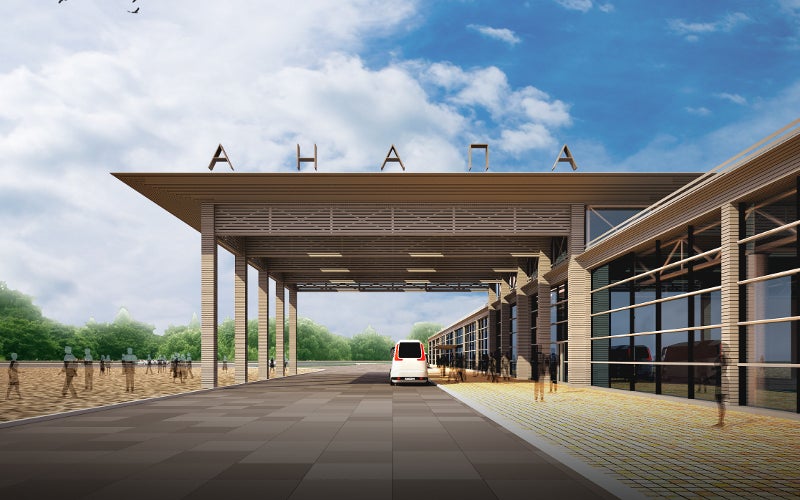
Anapa International Airport, also known as Vityazevo Airport, is located off the Black Sea coast in Anapa, Krasnodar Krai, Russia. The airport serves Anapa, and the cities of Novorossiysk and Temryuk.
The airport is managed by Basel Aero, a part of Russia‘s biggest industrial diversified group Basic Element, which operates four airports across Russia’s Krasnodar region. This includes Sochi International Airport, Krasnodar International Airport and Gelendzhik Airport.
Anapa International Airport handled 1.18 million passengers in 2015, recording a 17% growth year-over-year. The airport was named Russia’s best regional airport in the two million passengers per annum category by the coveted National Airport Infrastructure Show & Civil Aviation 2015.
The airport is served by 20 airlines, which offer services to 40 destinations.
New terminal complex project background
One of the biggest resorts in Russia, Anapa was given federal resort region status in 1994 for relaxation of single children, teens and parents with children. It is the only resort having 42km-long curative sandy beaches and 12km-long shingle beaches.
Millions of tourists visit the region every year from all over the country and abroad, resulting in a surge in passenger traffic at the Anapa airport.
A significant drop in the service level at the airport has been witnessed as the passenger processing capacity of the existing 5,000m² terminal at the airport is limited to 400 passengers per hour (pax/h).
To ensure a high level of customer service and to accommodate the growing passenger traffic, the airport operator has decided to construct a new terminal complex to handle the domestic operations, as well as modernise and upgrade the existing terminal to handle international operations.
The project will see threefold increase in the total terminal area and increase in passenger processing capacity to 600pax/h.
Construction of the new terminal was initiated in March 2016 with the commissioning scheduled towards the end of 2016. Reconstruction and modernisation of the existing terminal is scheduled post the commissioning of the new terminal.
Anapa airport new terminal features and facilities
The terminal construction project includes construction of a new building, off-site utilities, sewage facilities and waterworks. The new single-floor 11,800m² terminal will be constructed in a rectangular site located north-east of the existing terminal building.
Concessions in the new terminal including the retail outlets, cafes, restaurants and cafes will be organised with a new approach in accordance with the passenger preferences. A special playground for children and a business lounge for business-class passengers will be created inside the terminal.
Latest technology will be integrated into the terminal by using energy-efficient equipment such as solar batteries and environment-friendly material.
Financing for the terminal project
The total investment for the project is estimated at $22m (RUR1.5bn), of which $20.42m (RUR1.4bn) is allocated to the terminal construction.
The Sberbank of Russia approved RUR800m ($11.79m) for the project. The Russian Economic Ministry supported the project what helped Basel Aero to receive a Sberbank loan at a reduced rate.
Contractors involved
The design, infrastructure and project documentation for the project was done by Federal State Unitary Enterprise (FSUE) Aeroproject, the design organisation of Russia’s Federal Air Transport Agency (Rosaviatsia).
The technical construction contract was awarded to Stroy International, while Technostroyalliance-Center is responsible for construction and installation of the offsite utilities and engineering documentation.
The facade of the new terminal building was developed by Sergey Shvedov Studio, an urban planning, architecture and design firm based in Russia.








